So you’re looking at buying a new planter? It’s possible you may become inundated with information from google searches or gardening magazines. We know that choosing the right planter is an important decision, whether you’re a homeowner, business owner, or landscaper. It would help if you balanced the priorities of not only looking good but being practical too. There are many factors that can affect the practicality of a planter, for example, where will it be installed? What kind of climates will it face? What will be planted in it?
The purpose of this article is to break down all of the information to assist you in making the right decision for you. Our easy-to-follow guide will make shopping for different types of planters a breeze.
Ready to shop already? Visit our store now!
Contents
The 9 Best Planter Materials
There are a variety of different materials used for planters, but the main ones are:
- Plastic planters
- Wooden planters
- Metal planters
- Glass planters
- Concrete planters
- Terracotta planters
- Foam planters
- Glazed ceramic planters & clay pots
- Fiberglass planters & resin planters
As you can see already, there are quite a few. So how do you narrow down your choice?
Think about what you want. Do you need something long-lasting? Do you have a particular style you need to match with? Will you be moving the pot around a lot, if so, do you need something that won’t break easily?
Not all planters tick all these boxes. Let’s have a look at the strengths and weaknesses of these materials!
The Pros And Cons Of Different Planter Materials

Plastic Planters
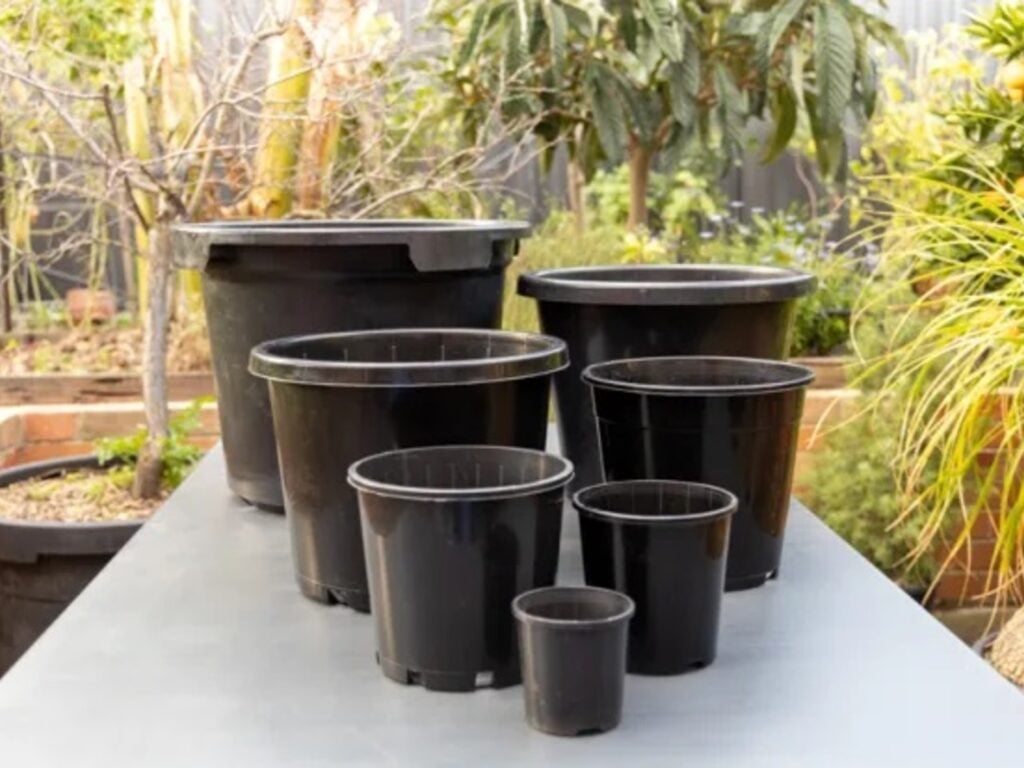
Plastic pots are suitable if you just need something to carry your plant home from the nursery. This is because plastic planters break very easily and are only meant for single use. So, if you need something temporary opt for plastic planters.
Wooden Planters

Wooden planters often look really beautiful, and suit most aesthetics, however, they do tend to be high maintenance. Wood planters also don’t last too long compared to their rivals and for this reason, often lack in the value-for-money department.
Metal Planters

+ Metal planters are very good at withstanding a variety of weather conditions. Aluminum is the metal of choice as it does not crack in freezing temperatures, and it can stand up to rain.
– Just be careful in hot weather or direct sunlight as metal planters can become quite hot. This has the potential to damage the plants or create drier soil leading to root rot. Unfortunately, this means they aren’t always suitable outdoor planters.
Concrete Planters

+ Concrete planters are quite strong, they can be hard to crack which means they last a long time.
– Their main drawback is that they are usually very heavy, so once you install them, it’s quite difficult to move. Concrete planters can also become ugly if left outdoors due to lime, salt, and moss buildup.
Terracotta Planters

+ Terracotta planters are a popular choice due to their beautiful appearance. They have that traditional look that you think of when you imagine flower pots.
– Terracotta pots can also be fairly inexpensive however, with this material, if you drop it you break it! It is also a porous material, this quality benefits the plant’s health in the summer, but can be detrimental in the winter as the terracotta pots become susceptible to frost. They are also quite heavy, so it isn’t easy to move them around.
Ceramic Planters

+ Terracotta and ceramic planters have quite a few similarities. Ceramic planters however have a protective layer of lacquer that prevents the soil from drying quickly.
– Other similarities range from the type of material used, the color, and the fact that they are easily broken, chipped, and usually deteriorate over the years.

Fiberglass Planters – The Best Planter Material
Fiberglass is easily our favorite material to use for containers. This is because it has so many pros and very few cons, for example, this material is lightweight, incredibly durable, stylish, and low maintenance. It can withstand heat, frost, rain, and sunlight.
The main drawback can be their price tag. However, because they last so long and are not easily damaged, their value for money in the long term is very clearly the best.
In summary, the different types of planters can be compared like this; plastic pots aren’t suitable for long-term use. If you are looking for a permanent fixture outside, in your home, or company, take a look at some of the sturdier options.
Wooden planters, ceramic pots, and terracotta pots can look quite beautiful, but without proper maintenance, can deteriorate quickly. Concrete containers and Metal planters can last a long time. However, metal planters don’t tend to yield healthy plants, and concrete pots have aesthetic issues over time.
Fiberglass planters are ideal in that they tick all the boxes, unlike many other materials. They are good for plant health, the paint on our planters includes UV protection, they can withstand hot and cold climates, they are sturdy and their entire appearance looks good for a long time.
Planters Etc only offers planters made from fiberglass, due to the higher quality material. You can find out all the reasons to choose fiberglass on our why fiberglass planters guide.

Best Planter Shapes
Planter shapes mostly fall into three main categories; round planters, square planters, and rectangular planters. Within those categories is a range of different types of planters, from the normal varieties of short, tall, narrow, and wide to the more unique shapes of the tapered, fluted, globes, and even rock-shaped.
The key to finding the best types of planters for your project is to consider what shape matches the overall style of the area, and also what types of plants you plan to grow.
Round Planters

Round planters have traditionally been a favorite with many gardeners, for planting beautiful flowers or creating a container garden. The cute shape compliments garden arrangements, a coffee table, or even window sills.
More recently it has become popular with landscapers, who sometimes favor very large round pots for projects such as restaurants or offices. These tend to be filled with larger plants, such as citrus trees or tropical plants like Elephant Ear.
The key is not to space these large containers too close together. For a professional look, line a street at intervals with big round containers or place them on either side of an entranceway.
Square Planters

Square planters are not only stylish but incredibly functional as well. Their shape has the ability to match any decoration or style.
They are chosen by many commercial properties due to their sophisticated look which can blend in with the harsh edges of corporate buildings. They are also great at being able to fit into office layouts. For example, square planters fit fantastically in the corners of rooms or along edges, creating a seamless look.
This shape has also become a favorite for container gardening. Some popular square planter ideas are to arrange a number of small square planters to fit perfectly together allowing you to water all of your small plants in one continuous effort, or use one large pot to plant all of your favorite plants in neat rows.
Rectangular Planters
Rectangular planters are hailed for their innovative solutions for diving spaces, hiding unsightly things, and lining paths or entranceways.
A perfect example of this can be seen in the photo below. This restaurant utilized its planters to not only look fantastic but to create a barrier between the street and their guests. Allowing their customers to enjoy some privacy while eating their meals.
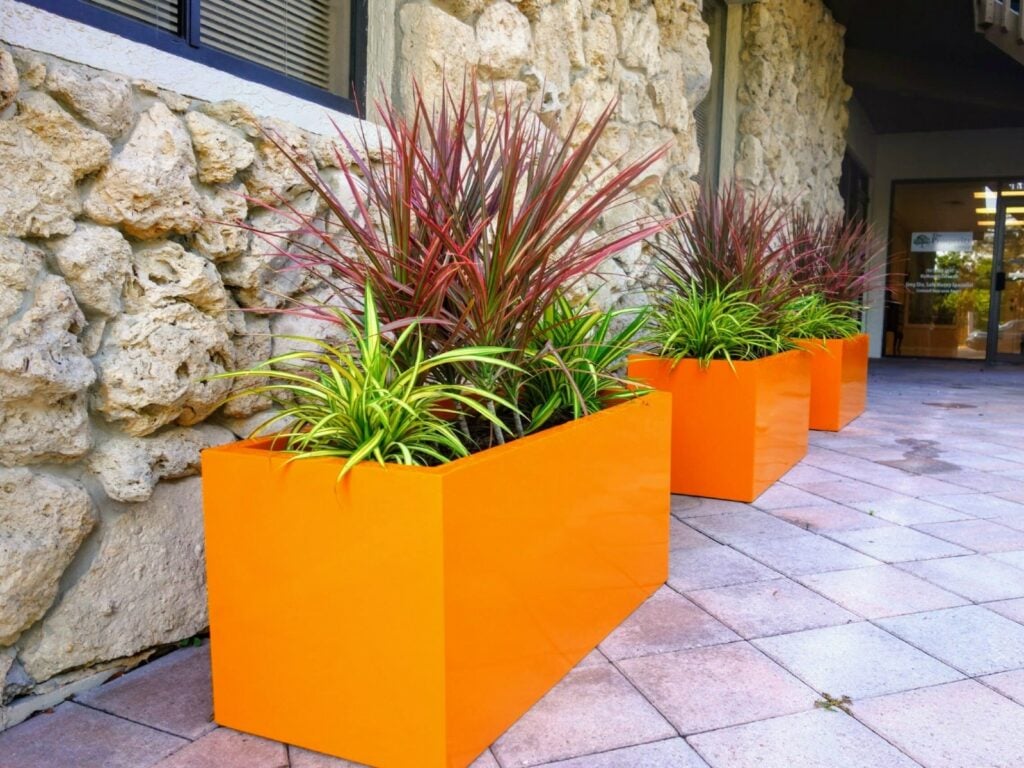
These functional uses maximize the benefits of rectangular containers. Where an establishment might have previously built a wall, they can use plant pots instead, making them extremely good value for money. Some other uses for rectangular plant pots are to place two on either side of your door, or even in the corners of a room or patio.
You can read our article on choosing the right pot shapes for your container garden for more information on this topic and some advice from experts.
Best Planter Sizes
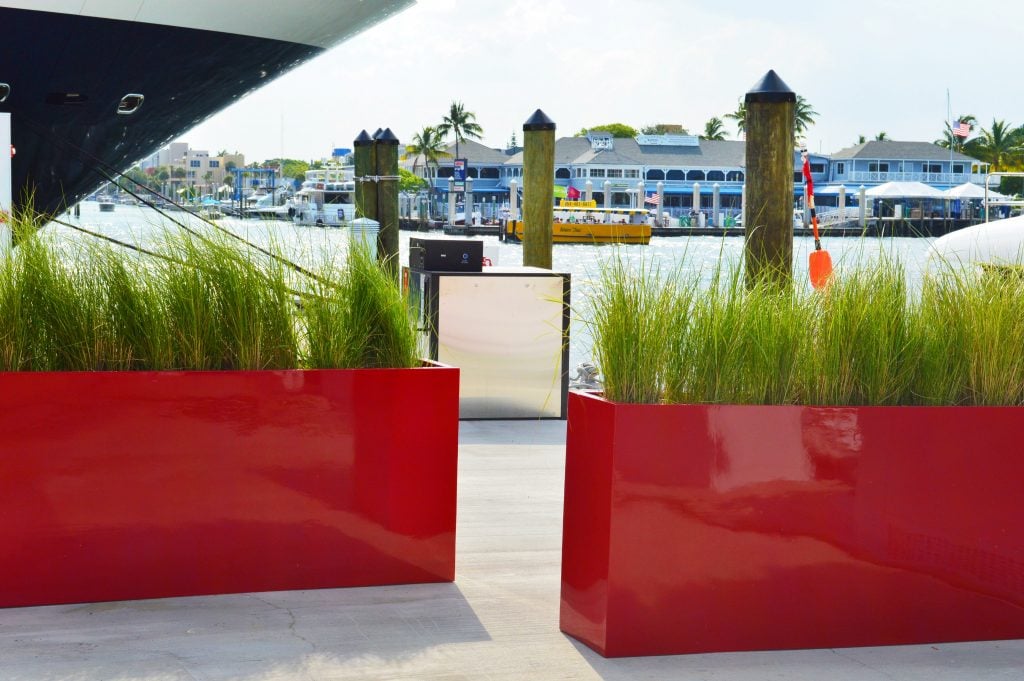
You should never gloss over which planter size you choose. Just as shape and material are essential considerations, size is equally so.
The size that you choose can not only determine your plants’ health but also the size it grows to.
Research shows that doubling plant pot size can increase plant growth by 40%. This is most likely because the size of the pot regulates the amount of space the plants’ roots can grow in, it also determines the amount of potting soil you can put in, and therefore the nutrients your plants have access to.
Now, nearly doubling the size of your plant may or may not be what you are aiming to do, so choose your plant pots based on what you are trying to achieve.
A good place to start is to know how the pots are measured. It’s a fairly easy concept but can obviously become more difficult with the unusually shaped planter types.
What Size Do I Choose For My Plant?
A good rule of thumb is to select a planter that has a diameter that’s at least an inch wider than the diameter of the root mass of the plant.
This allows for space for potting soil around the roots and some extra room for the roots to grow.
Remember, as you grow your plants, it’s important to assess if they need repotting into a larger pot.
One factor in deciding when and how to repot your plant is the type of plant. For example, a tree will need a much deeper pot for its roots once it gets out of its nursery pot, whereas an ornamental grass needs less space.
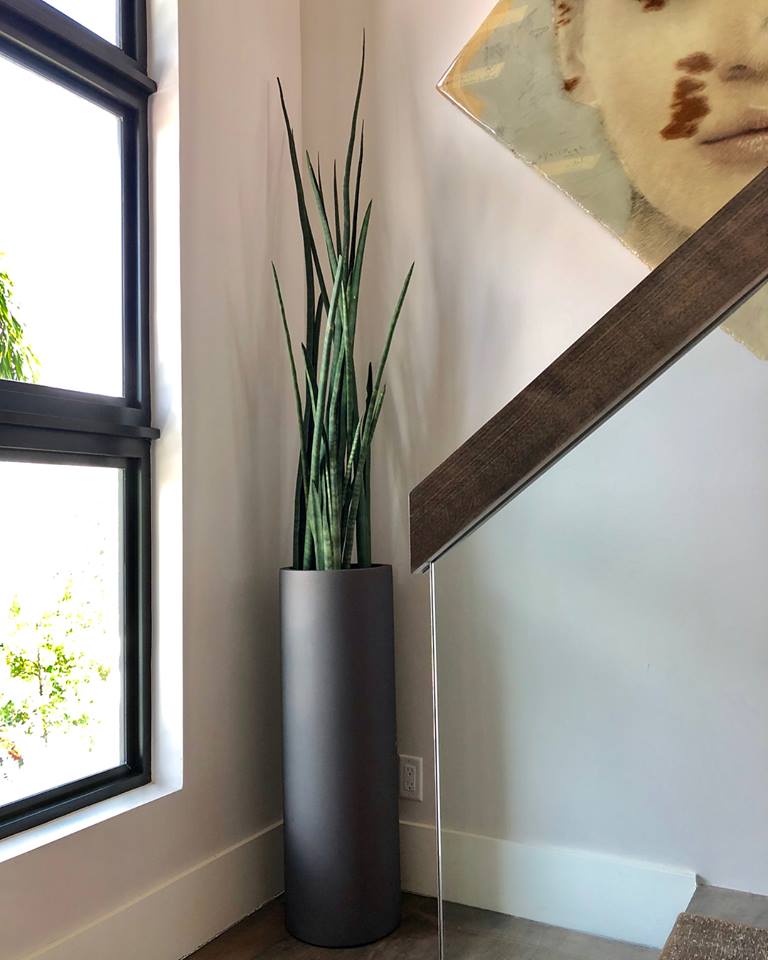
Size Measured In Pot Diameter
The easiest way to measure a pot’s size is to measure the pot diameter.
The diameter is the measurement around the pot and is usually measured in inches.
In general, shops sell pots in size intervals of 2 inches.
So, a very tiny pot is 2 inches, the next size up is 4, then 6, and so on.
Size Measured In Gallons
Another way is to calculate how many gallons in volume a pot is. This is done by multiplying the container’s width, length, and height.
Now, you can see how this gets a bit tricky with the uniquely shaped globe or rock-shaped pots.
We would recommend doing a rough estimate for these. However, for the flower, rectangular, and cylindrical shaped pots some useful online calculators take out the hard work. Try using this plant pot calculator for quick calculations.
Need some specific examples of what size pots to use for different plants? Read our previous blog post on plant pot sizes to help you choose the right size for you!
Drainage Holes For Planters
When selecting a plant pot, it’s also extremely important to choose one with adequate drainage. Having a pot with poor drainage will negatively affect the plant’s health and prevent it from flourishing. This is because the planter will not allow the soil to dry properly, leading to wet roots and eventually root rot.
An easy way to buy a planter with better drainage is to select one with drainage holes. Our fiberglass planters all come with the option to include drainage holes.
If you have a planter at home that doesn’t have good drainage, you could always drill holes in the bottom. This will instantly improve the drainage of the planter – but make sure to use a saucer to catch the excess water.

Best Planter Use Examples
So after careful consideration of the material, shape, and size, you are looking for some tips on what types of planters are best suited to which areas. The good news is that if you choose fiberglass planters from Planters Etc, you can be safe in the knowledge that any planter you choose can withstand any element it contends with, be it indoors or outdoors. A good place to start with this decision is to research the needs of the plants. Some plants thrive indoors, whereas some prefer fresh air. Some are also suited to full sun and other to partial sun or shade.
For some advice on the sunlight needs of plants, try reading our article 8 beautiful porch plants!

Outdoor Planters
For outdoor plants, our selection of recommended outdoor planters is perfect for any setting, be it your garden, front porch, or outdoor landscaping.
Our popular Amesbury narrow rectangular planter looks sleek and stylish on these apartment balconies. The best part? The fiberglass is strong enough to stand up to colder climates and sturdy enough to anchor larger plants in the wind. This means that come rain or shine, you can trust that the planter won’t fail you.
Another great look is the Montroy cube planter pictured below. With 20 different color finishes to choose from, you can match any outdoor setting.
You could also consider opting for a planter solution that maximizes floor space, such as wall-mounted planters, hanging planters, or even hanging ceiling planters. These options are great for outdoor use where the plants need to get plenty of sunlight.
Try one of our wall-mounted planters. These space-utilizing gems not only provide a clean and well-maintained look but is also ideal for growing plants
Indoor Planters
There is a huge range of planter types recommended for indoor use. They come in a variety of shapes and sizes to adapt to any indoor environment.
You could try choosing large, vibrant, conversation-starting planters like the Toulan modern square planters pictured in this hotel lobby. The trio of warm colors and leafy greens perfectly balances out the otherwise harsh brightness of the mostly white decor and provides a welcoming ambiance to this business.
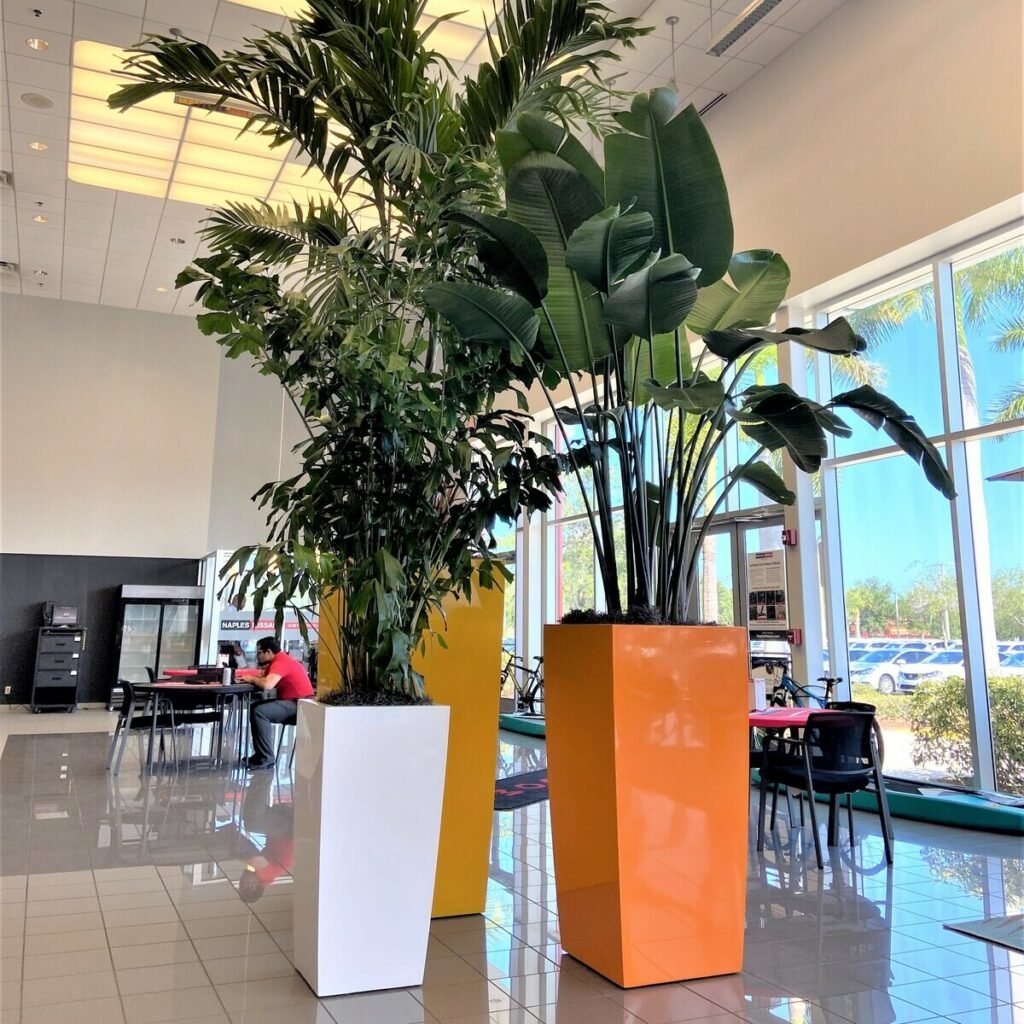
Not sure what plants grow well? Download our free resource on the 19 best indoor plants as recommended by gardening experts!
Or you could try cheering up a walkway with some well-spaced pots filled with low-growing plants like the Alicante fluted round planters pictured at this busy airport.
For those with a slightly more eclectic taste, filling rooms with many types of planters, like The Dalmar Fort Lauderdale can make an area look stylish and vibrant. Most of the pots we sell give you a size option, so choose a few different styles in various sizes and have fun arranging!
Shop The Look!
See what else Planters Etc and our planters can do for your property!

Begin Your Exciting Planter Journey Today
If you want to put your new-found knowledge into action and complete your amazing project with Planters Etc, Visit our shop to browse our huge inventory of planter sizes and shapes, ranging from traditional styles to sleek, modern containers.
Unlike wooden pots, ceramic planters, or even concrete containers, the high-quality fiberglass used in all our pots will not disappoint. From the health of your plants to the longevity of the planter, we’ve got you covered.
At Planter Etcetera, our customers are protected with an industry-leading 3-year warranty guaranteed by our supplier Jay Scotts. Allowing you the freedom of peace of mind with all your purchases.
